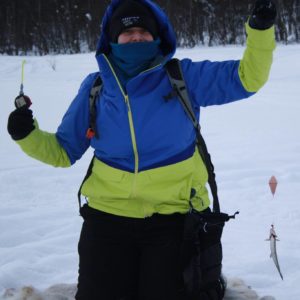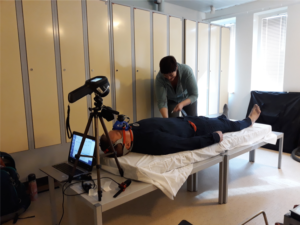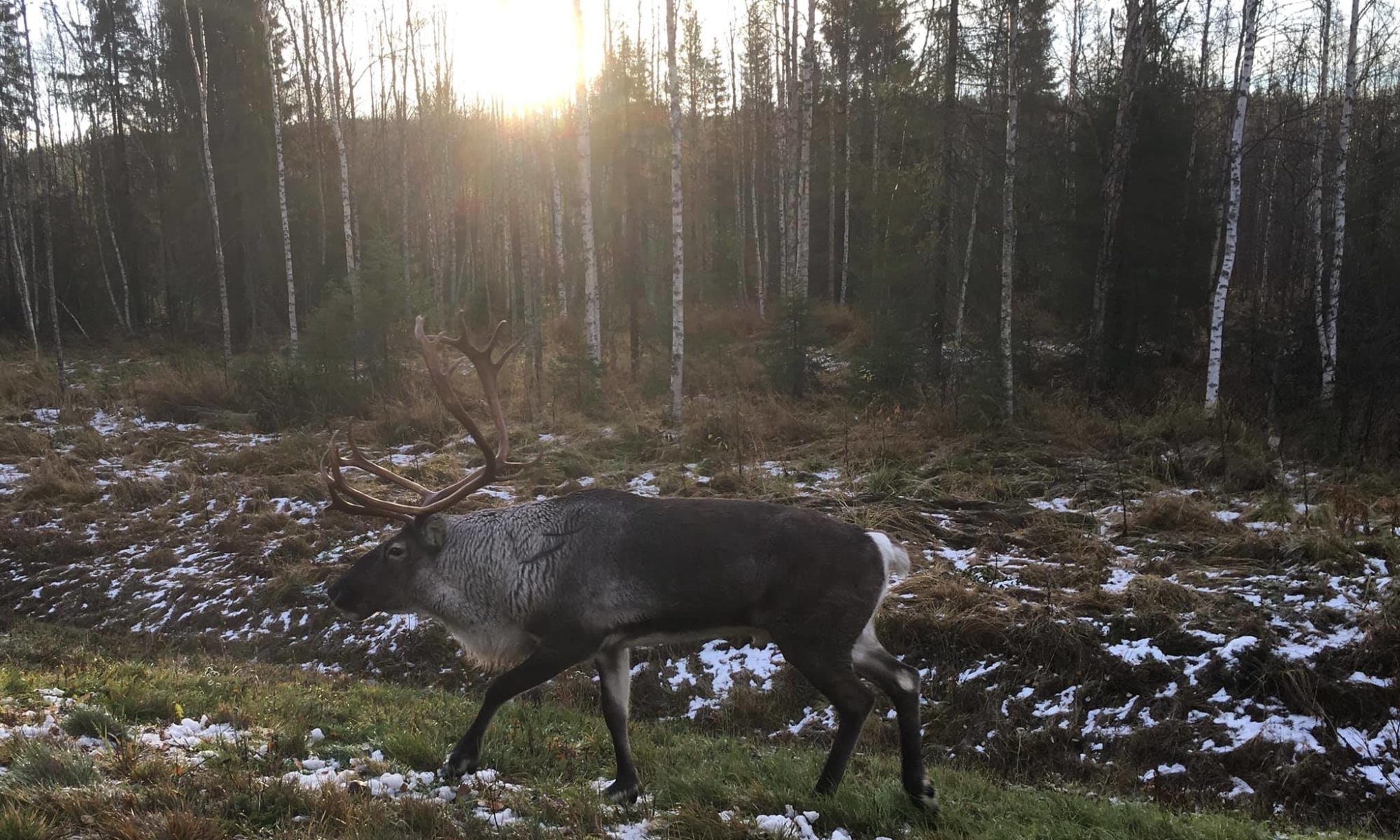 I have been collaborating with Drs. Minna Turunen and Païvi Soppela from the University of Lapland and Dr. Karl Heinz-Herzig and Ville Stenbäck from University of Oulu to assess cold adaptations among reindeer herders in Finland. This region around the Arctic Circle is home to numerous reindeer herding cooperatives. Reindeer herders are highly active and regularly exposed to the elements. This research assesses the physiological and behavioral mechanisms developed by the herders to cope with high levels of physical activity and a cold environment. Modern data on cold climate populations are sorely lacking, and results from this work will provide key insights both on contemporary human adaptation to cold climates and the evolution of past populations.
I have been collaborating with Drs. Minna Turunen and Païvi Soppela from the University of Lapland and Dr. Karl Heinz-Herzig and Ville Stenbäck from University of Oulu to assess cold adaptations among reindeer herders in Finland. This region around the Arctic Circle is home to numerous reindeer herding cooperatives. Reindeer herders are highly active and regularly exposed to the elements. This research assesses the physiological and behavioral mechanisms developed by the herders to cope with high levels of physical activity and a cold environment. Modern data on cold climate populations are sorely lacking, and results from this work will provide key insights both on contemporary human adaptation to cold climates and the evolution of past populations.
This project was funded by the National Science Foundation and the American-Scandinavian Foundation. During the first phase of data collection, in 2018-19, we examined total energy expenditure, resting metabolic rate, brown adipose tissue activation, body composition, diet, and activity levels. We also collected data on glucose, total cholesterol, and HDL cholesterol.
Brown Adipose Tissue
Brown adipose tissue (BAT) is a type of fat that burns only to keep you warm. BAT presence has been well known in hibernating mammals and human infants – all creatures that need to stay warm during long periods of little-to-no physical activity. However, it is now known that adult humans, both indigenous to cold climates and not, deposit and burn BAT under cold stress. Some excellent work has been done on BAT activation among the Yakut of Siberia. Our work in Finland hopes to expand upon our limited understanding of BAT among a cold population, which will allow for cross-cultural comparisons as well as comparisons with current laboratory data.
To measure BAT, you need to mildly cold (~60ºF) expose individuals, using a whole body cooling suit. During the cold exposure, metabolic rate is measured while also taking thermal images of the should (where we expect to find BAT) and the chest (where we do not expect to find BAT). We then compare the cold exposure measurements to room temperature measurements.

BAT activation can lead to as much as a 40% increase in metabolic rate; however, there is a great deal of variability. Preliminary analysis among the herders suggests and 8.9% increase in metabolic rate associated with BAT activation.

Publications
Ocobock C, Soppela P, Turunen M, Stenbäck V, Herzig KH, Rimbach R, Pontzer H. (2021) Reindeer herders from subarctic Finland exhibit high total energy expenditure and low energy intake during the autumn herd roundup. American Journal of Human Biology. E23676. https://doi.org/10.1002/ajhb.23676
Ocobock C, Soppela P, Turunen M, Stenbäck V, Herzig K-H. (2020) Elevated resting metabolic rates among female, but not male, reindeer herders from sub-arctic Finland. American Journal of Human Biology. 32(6): e23432. https://doi.org/10.1002/ajhb.23432.
Turunen M, Soppela P, Ocobock C. (2021) How reindeer herders cope with harsh winter conditions in northern Finland: Insights from an interview study. Arctic. 74(2): 188-205.
Ocobock C, Soppela P, Turunen M, Stenbäck V, Herzig K-H, & Lakela KA. (2020) Poronhoitajien veriarvot ja ruokavalio (Blood sugar, cholesterol, and diet among Reindeer Herders). Poromies. December 2020. 4: 52-54.
Turunen M, Soppela P, Ocobock C, & Lakela KA. (2020) Millä Keinoin Poronhoitajat Pärjäävät Pakkasessa? (How do reindeer herders cope with harsh winter conditions in northern Finland?). Poromies. May 2020. 2:60-63.
Ocobock C, Soppela P, Turunen M, Stenbäck V, Herzig K-H, & Lakela KA. (2019) Poronhoitajien lepoaineenvaihdunta ja ruskean rasvan aktivoituminen (Resting metabolic rates and brown adipose tissue activation among reindeer herders). Poromies. December 2019. 6:32-35.
Ocobock C, Soppela P, Turunen M, Stenbäck V, Herzig K-H, & Lakela KA. (2019) Poronhoitajien energiankulutus ja fyysinen aktiivisuus erotuksen aikana (Reindeer herders’ energy expenditure and physical activity levels during the roundup). Poromies. October 2019. 5:21-23.
